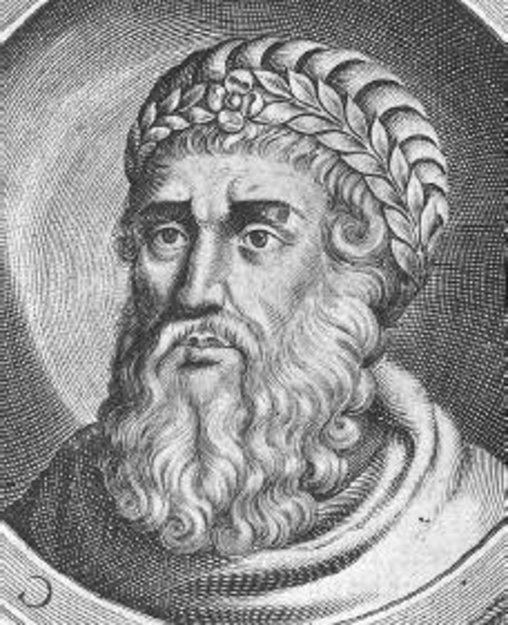
Keeping Herod in Christmas
Many scholars believe that the birth narratives, which we find in written form for the first time fifty-plus years after Jesus’ death is a product of Jewish midrash. Midrash was a process by which the Jewish rabbis explored current situations or questions by looking to their scriptures (the Christian Old Testament) for clues and insight into what might be happening in their present time.
In this way, midrash was used to help explain the experience of the adult Jesus. People found Jesus to be such an extraordinary human being that they believed he was the Messiah, the Anointed One, the Christ, but where did he come from and who was he? Certainly an extraordinary person must come from an extraordinary background. So, it seems the rabbis turned to scripture to look for clues about where Jesus came from and who he was. This helped develop the birth narratives and also set the stage for the life of Jesus as presented in the gospels of Matthew and Luke.
Once you know what to look for, midrash seems obvious. The author of Matthew even quotes the Hebrew scriptures that inspired their story and tells us four times in chapter two alone that Jesus was the fulfillment of scripture:
- On the birthplace of the Messiah in Bethlehem (Micah 5:2 and 2 Sam 5:2)
- The departure to Egypt – “Out of Egypt I have called my son.” (Hos 11:1)
- Herod’s infanticide (which historically didn’t happen) – “A voice was heard in Ramah… Rachel weeping for her children" (Jer. 31:15)
- “He will be called a Nazorean.” (citation unknown)
In addition, if you read the Gospel of Matthew carefully you’ll notice that Matthew, to make Jesus more acceptable to the Jewish audiences he was writing to, cast Jesus in the role of the new Moses. We see a small sampling of that in this chapter. Jesus is the one who will save the Jews from the evil ruler, Herod, just as Moses was the one who would save the Jews from slavery in Egypt under the tyrant Pharoah. Herod ordered the death of all boys under the age of two, Pharoah ordered the death of all sons born to the Israelites. Moses escaped the infanticide but still grew up in Egypt, eventually leading his people out of Egypt. Jesus escapes Herod’s infanticide with his parents by fleeing to Egypt.
In the birth narrative in Matthew, the lines are blurred between history and fiction. But one concrete historical fact was the nastiness of Herod. Rome appointed Herod (who was only half Jewish, his mother was an Arab princess from Petra) King of Judea. As such, he had complete authority, and he used it ruthlessly. He established an enormous secret police force, brutally killed anyone suspected of plotting against him, and created Roman “peace” by slaughtering all dissidents. Even six members of his family – three sons, a wife, a mother-in-law and grandfather – were all executed by his command.
In addition, Herod controlled the Jewish people and religion by placing his own lackey in the position of High Priest. If any of his appointees was foolish enough to displease him, Herod killed him and replaced him with another lackey.
Ironically, the vast majority of popular tourist sites in present-day Israel were originally built by Herod. Herod was security conscious. With the use of forced Jewish laborers, Herod built fortresses throughout the land just in case he should ever need sanctuary. Even projects that Herod commissioned like the Temple mount in Jerusalem, to endear him to the people, failed to change their hatred for him.
Turning this story into a beautiful Christmas card with the astrologers on camels on a clear, calm winter’s night with a beautiful star in the sky is nice, but it completely sanitizes the story that Matthew intended the people to hear.
Matthew wanted people to hear the political conflict between Jesus, God-appointed King of the Jews, who was a man of non-violence, love, peace, compassion and Herod, Rome-appointed King of the Jews who was a violent tyrant.
Matthew wanted people to hear the religious conflict between the High Priest lackeys and Jesus, a man of deep faith, and commitment to the grace, mercy, light and love of the Divine.
Matthew wanted to set the stage for Jesus’ ministry and execution by building in his conflict with the powers-that-be from the beginning. Jesus was the one who knew the Sacred Presence of life so deeply that he couldn’t simply roll over or bury his head in the sand and ignore all that was happening in the world. He became a beacon of light for the people – politically and spiritually. He would speak truth to power, he would turn the kingdom upside down – blessed are the poor in spirit, the gentle, those who work for justice, those who mourn (Beatitudes, Matthew 5).
Truthfully, this scene could play out today set in modern day Russia, or Venezuela, or Afghanistan, or Senegal, or numerous other places around the world where leaders are ruling with an iron fist with no care or compassion for the greater good of their people. It could even play out in some situations in the United States. We are not immune to leaders who lack integrity and compassion.
While we usually consider this story to be only about one special child, it is truly about every child. Every child has the potential to make a difference in this world, to work for peace, to stand up against the tyrant and help the underdog. Every child brings us renewed hope for the future.
The Herods of the world haven’t gone away, and we still need brave, intelligent, compassionate visionaries of true peace to stand up to them. The peace the world needs is not peace-through-violence, it is a peace through compassion, understanding, and respect.
Yes, we still need Herod in Christmas to remind us.
Love & Light!
Kaye



